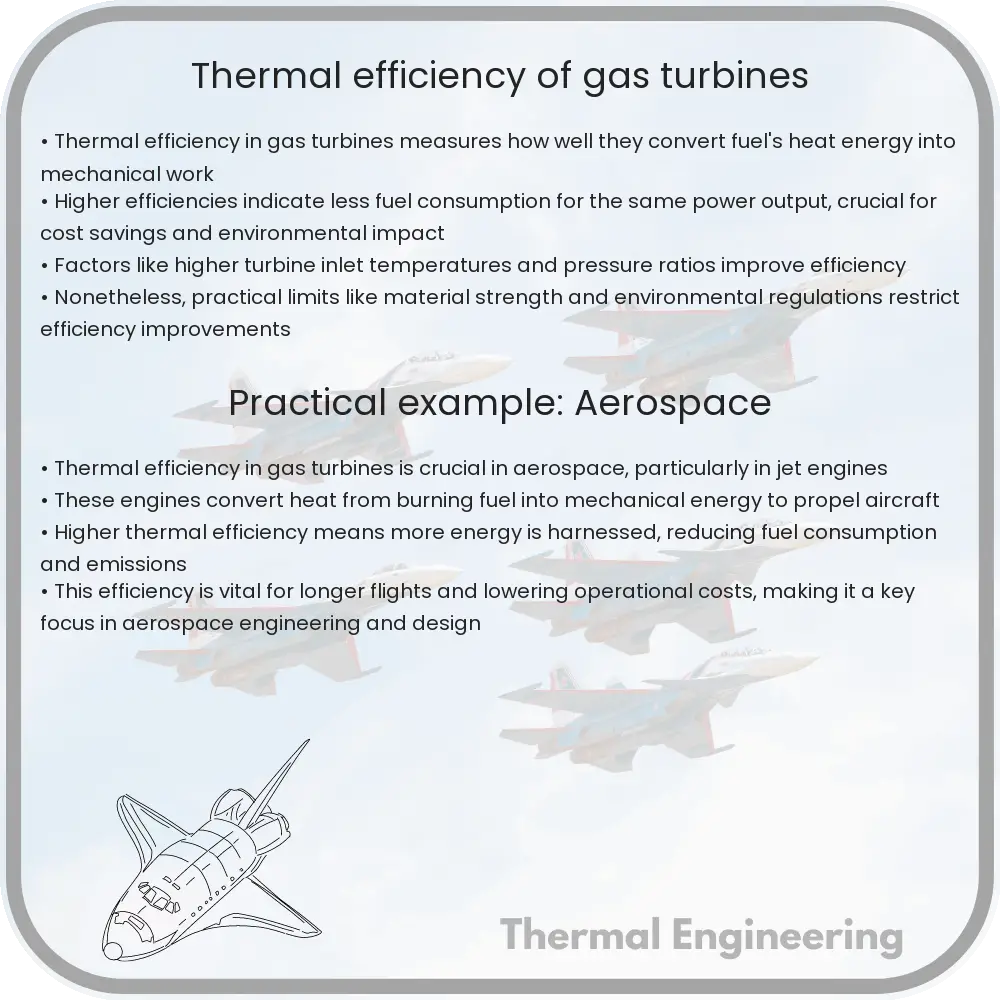Learn how thermal efficiency in gas turbines converts fuel heat into power, impacting performance and emissions.

Understanding the Thermal Efficiency of Gas Turbines
Gas turbines are widely used in various applications, ranging from aerospace engines to power generation. One of the critical aspects that determine the performance and environmental impact of gas turbines is their thermal efficiency. This measure indicates how well a turbine converts the heat energy from fuel into useful work or power. Improving thermal efficiency not only enhances performance but also reduces fuel consumption and emissions.
How Thermal Efficiency is Calculated
Thermal efficiency (\(\eta_{th}\)) of a gas turbine is typically calculated using the formula:
\[
\eta_{th} = \frac{Work output}{Heat input} \times 100\%
\]
This formula involves the ratio of the mechanical work output of the turbine to the total heat energy input from the fuel. The work output can further be expressed as the product of the turbine’s power output and time, whereas the heat input is the product of the fuel mass flow rate, the heating value of the fuel, and time.
Factors Affecting Thermal Efficiency
- Temperature: The efficiency of gas turbines significantly increases with the inlet temperature of the gas. Higher temperatures enable the turbine to extract more energy from the exhaust gases, though this is often limited by material strength and thermal characteristics of turbine components.
- Pressure Ratio: The ratio of the pressure at the turbine exit to the pressure at the turbine inlet also affects efficiency. Higher pressure ratios typically improve the efficiency but require more robust and sometimes more expensive materials to withstand the increased stress.
- Component Efficiency: The efficiencies of individual components of the turbine, such as the compressor and the combustor, also impact the overall thermal efficiency. Improvements in blade design, cooling methods, and combustion technology can lead to better component efficiency.
Technological Improvements
In the pursuit of higher thermal efficiencies, engineers and scientists focus on several technological advancements:
- Materials: Development of high-temperature materials like ceramic-matrix composites (CMCs) and superalloys that can withstand higher temperatures without degrading.
- Cooling Techniques: Advanced cooling methods for turbine blades, such as internal air channels and thermal barrier coatings, help in managing the heat loads while allowing higher operational temperatures.
- Combustion Technology: Innovations like lean-burn technology help in achieving more complete combustion of fuel, thereby increasing efficiency and reducing emissions.
The Role of Regeneration
One effective way to enhance the thermal efficiency of gas turbines is through regeneration. This process involves capturing some of the waste heat from the turbine exhaust and using it to preheat the compressed air entering the combustion chamber. By recovering this heat, the turbine requires less fuel to reach the desired temperature, thus improving efficiency.
Conclusion
Thermal efficiency is a key metric in the performance of gas turbines, influencing both operational costs and environmental sustainability. Through ongoing advancements in materials engineering, cooling technologies, and combustion processes, the efficiency of these powerful machines continues to improve, paving the way for more sustainable and economical power generation and aeronautical propulsion systems.